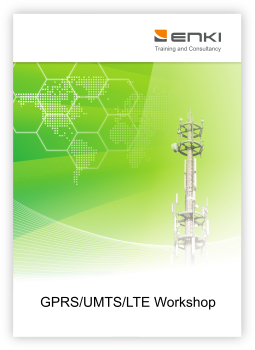ELP 4008 ★★
The GPRS/UMTS/LTE Workshop course presents architecture and details of the air interface of the 2G, 3G and 4G packet switch systems. Participants are first introduced with the GPRS/EGPRS system and discover the needs for 3G system. Next details of the 3G system are presented including the air interface, packet switched core network, Quality of Service (QoS) handling, security aspects and service provisioning. Finally participants become familiar with the advantages of the LTE and details of LTE architecture, air interface and service provisioning in LTE by IMS. The training provides brief and excellent overview and comparison of the GPRS, UMTS and LTE systems.
Target audience – Who should attend and benefit
The training is addressed to both managerial and technical staff who require an overview and comparison of the 2G, 3G and 4G systems.
Prerequisites – What you are supposed to know prior to the course
No specific requirements, however general knowledge in GSM, UMTS and LTE is beneficial.
Course content – What you will learn
- Generations of mobile telecommunications
- CS vs. PS mobile data
- FDD and TDD
- Opportunity Driven Multiple Access (ODMA)
- Access network evolution overview (1G, 2G, 3G and 4G)
- GPRS architecture
- Adding packet data to GSM
- GSM and GPRS nodes
- GPRS interface
- Traffic and signalling
- GPRS air interface
- GPRS channel concept
- GPRS protocols
- SNDCP layer
- LLC layer
- RLC/MAC layer
- GSM RF layer
- EGPRS
- The need for 3rd generation system
- Migration from GSM to UMTS
- UMTS as a 3G mobile system
- IMT-2000
- Spectrum allocation
- UMTS architecture
- Overall UMTS architecture
- UTRAN
- Core Network
- User Equipment
- WCDMA air interface
- WCDMA as a spread-spectrum radio system
- Bandwidth on demand
- Channelization and scrambling
- Modulation
- WCDMA channel concept
- Rake receiver
- UTRAN
- The general purpose of UTRAN
- UTRAN protocol model
- UTRAN functions
- RRC states
- Performance of Node B
- Performance of RNC
- Radio Resource Management (RRM)
- CN protocols for GPRS and UMTS
- CN evolution
- The Core Network protocol model
- Non-Access Stratum (NAS) protocols
- Packet data backbone network protocol
- CN transmission (ATM and IP)
- UMTS services and applications
- Service provisioning
- UMTS service categories
- UMTS service architecture
- Quality of Service (QoS) in UMTS
- Security
- Requirements of the user equipment
- EPS architecture
- LTE requirements
- EPS architectural principles
- Strata
- EPS Bearer and QoS
- Integration with 2G and 3G
- Interfaces overview
- EPC functions
- LTE functions
- LTE air interface
- User plane
- Control plane
- Protocols
- Radio interface structure
- Channel structure
- Time domain structure
- Frequency domain structure
- Scheduling Block
- System spectral efficiency
- MIMO
- Evolution options for LTE
- Service provisioning in LTE
- IMS (What is the IMS?, Why IMS?, IMS standardisation, IMS architecture, standardised applications, IMS and LTE integration, example of IMS service)
- CS fallback
Duration – How long it takes
3 days which is equivalent to 18 hours of lecture.

